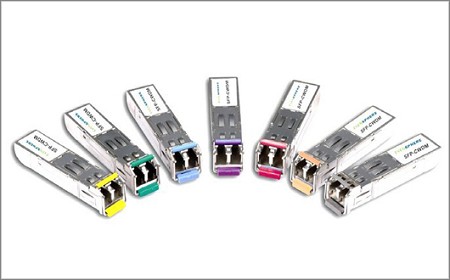5G has defined three use cases, and each requires a technology phase not less than 5 years. Assuming the deployment of 5G begins in 2019, it might take more than 10 years to achieve the 5G network in our imagination. We have to analyze the feasibility of technology and application, so as to provide a basis for the rethinking of superstructure.
The Three Use Cases of 5G

The three use cases of 5G
- ▪ The first use case of 5G is eMBB, short for Enhanced Mobile Broadband. It is defined to achieve Virtual Reality (VR) technology and Ultra-High Definition (UHD) video sharing, cloud access anywhere and up to 1Gbps of Internet bandwidth.
- ▪ The second use case of 5G is uRLLC, short for Ultra Reliable Low Latency Communications. It includes low latency automatic driving and industrial Internet etc.
- ▪ The last use case of 5G is mMTC, short for Massive Machine Type Communication). It is defined to realize vehicle networking and intelligent asset management, that is, to make Internet of Everything (IoE) become a reality.
The three use cases of 5G have covered every technology field that human technology has just touched, and the breakthrough of each technology field takes a long time. The use cases of 5G will reshape the social rules and bring severe challenges to the redefinition and management of society. So it needs a lot of practice to clarify the problems of social management and politics.
For the time being, we will not consider the specific scenarios of the three use cases. Because no matter what use cases are to be realized, there must be an achievable optical transport network as the physical foundation of all these use cases. In China, we have seen three major carriers' technical planning for 5G bearer network. But the reality is that these plans must rethink the cost and technology, and the logical relationship with corresponding use case, otherwise 5G will be far away.
Next, we will use the following table to analyze the feasibility of 5G optical transport network.

The 5G network optics solutions of China's three carriers
Tunable Technology
From the table above, we can see that China Telecom and China Unicom are both planning to use tunable optical modules in 5G fronthaul network, among which China Telecom adopts 25G tunable optical modules and ROADM technology. However, the tunable technology itself has problems of maturity and application.
First, the application of 25G tunable optical module from laboratory to industrial environment will take at least 2-3 years. Moreover, the optical modules with fixed wavelengths and fixed lasers are more economical and reasonable in practical applications. The arguers said that the deployment of tunable optical modules is flexible and simple and also simple to maintain. We say that the so-called flexible deployment is only in terms of labels and markings. In fact, all the wavelengths have been written into the EEPROM or MCU of the optical modules, and can be clearly and automatically identified from the background. So from the background, the tunable optical module is not more flexible than the fixed wavelength optical module.
Then, let's look at the front side, that is, the construction field. There is no difference between using optical modules with the same label and using optical modules with clear label wavelengths. The physical ports of the equipment can match any wavelength of the optical modules, that is to say, the optical modules can be randomly inserted into the equipment. The arguers said that, sending optical modules with different wavelengths to the construction field is more likely to make mistakes than sending a batch of identical optical modules to the construction field at least. This is a fallacy of weakening the capability of optical module manufacturers. You know, after long-term training, all the optical module manufacturers pursue the principle of zero-error quality.
Finally, the convenient maintenance of tunable optical modules does not exist. We must first understand that maintenance itself is aimed at product performance and reliability. It is almost undisputed to acknowledge that fixed-wavelength lasers are not only cost-effective but also the lowest cost on quality maintenance. On the contrary, the mass adoption of tunable lasers will bring a lot of maintenance work and failure problems. Because the tunable laser is temperature dependent, the temperature drift of the optical module itself and the requirement of 5G application environment run counter to each other logically in harsh environment, so the tunable optical module also has to face a severe test in this respect. By the way, ROADM technology can not be adopted by the core network because of the cost, loss, delay and other issues, which is almost beyond doubt refer to "ROADM Technology Shapes the Technological Illusion of a Generation".
The real value of tunable technology is actually used for link backup, so we don't need to pay for this expensive technology ignorantly. The dynamic tunable network conflicts with the strict stability of 5G networks.
PAM4 Technology
As a modulation method, PAM4 can multiply the bandwidth without increasing the port density. Due to the technical bottlenecks encountered by 56G NRZ, PAM4 technology has been launched. This modulation has proven to be entirely without problems. But there is a big difference between the actual application and laboratory. In practical applications, PAM4 technology needs an ideal transmission link, preferably low speed transmission. However, at present, due to the problems encountered by 56G NRZ, PAM4 modulation is used for high-speed transmission, which brings more nonlinear effects than low-speed transmission. Coherent communication has become a reliable technology because it does not change the quality of electrical signals and does phase processing for optical signals. The basic principle of PAM4 technology is to use more intensive level to transmit more information. The signal distortion of the intensive level in the module and the distortion on the optical link can not be solved by PAM4 technology.
Adopting PAM4 DSP or PAM4 CDR is the key to the success of the PAM4 technology. At present, in general, it is feasible to adopt VCSEL with PAM4 technology and analog CDR in short distance, and EML with PAM4 (DSP) technology in long distance. The third possible path is Silicon Photonics technology with DML and simulation CDR technologies. According to the above three judgments, we believe that if we can not successfully introduce Silicon Photonics technology in 5G high-speed network, the introduction of PAM4 technology is not suitable for 5G fronthaul. In the field of 5G backhaul, PAM4 using EML technology is feasible. There is a cost issue here, which is whether full coherence technology is used in 5G backhaul or long distance products with PAM4 partially added, depending more or less on cost and link distance.
We must also discuss an original question whether to use electrical multiplexing or optical multiplexing. The end of multiplexing in 5G network adopts higher rates, from 100G to 200G and then to 400G, while spatial WDM technology can also be used to achieve the same goal. Assuming that the application of 5G does not care about the room space, the traditional NRZ with passive DWDM and coherent technologies can achieve the target of 5G backhaul. If you care about the density of deployment, PAM4 with coherent technology is a solution. What we need to understand is that the delay caused by PAM4 technology is much larger than that caused by NRZ technology, which may also pose risks for some applications.
Whether the single lambda 100G technology can be used in 5G optical transport network is still a problem to be solved. In general, it is best to temporarily abandon this application for longer term technical observation.
The Relationship Between the 5G Use Cases and 5G Optical Bearer Network
The three use cases defined by 5G are ambiguous.
The first use case is basically feasible, and it can benefit most people's basic goals.
The second use case involves automatic driving, which is estimated to be an ad hoc network. If this network is integrated into a huge 5G network, the application complexity will be relatively huge. Huge planning will cause delays and redundancies. In addition, the biggest risk of automatic driving is the accuracy of local computing and sensing, and which network transmission to use depends on the network density and reliability. The density of 5G network matches this application goal, but it's better to use very mature technology than to introduce experiments.
The third use case, IoE, is to build a high-speed regional network or industry network, which has little to do with the speed and does not need huge bandwidth. Therefore, 5G network needs only the high-speed interfaces. As for IoE, people also need to be clear about whether it is necessary—when machines and machines become a kingdom independently, human beings are actually excluded. This use case is too early. We still can not understand the practical meaning of it.
If we want 5G optical bearer network to carry all human things, we must plan a large number of local data centers for 5G network. Telecom operators certainly have this condition and foundation. But we must understand that as a physical network, 5G network can not have the convenience of the Internet and the low cost of management. Some technical workers' vision of 5G goes beyond the realities and achievements of technology application. Forcing the introduction of some advanced technology is not related to achieving 5G goals. Back to the optical network itself, what we want it to achieve is density and speed, and bandwidth allocation.
In general, eMBB application of 5G network is a battle of speed. What we need to do is to increase the bandwidth available to terminals as much as possible. This network can not be very rigorous. The uRLLC network needs 5G high-speed bandwidth interface and flexible allocation of network bandwidth, which basically uses OTN technology. The application of mMTC involves the transformation of all things. The IoE is more based on the local cloud and public cloud. Its transmission is independent of 5G.
Conclusion
China's 5G optical network provides a huge social application prospect, but intends to use unrealistic technology and networking methods. The industry needs to rethink and reform.





















